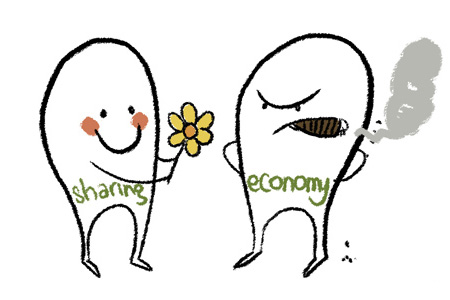Two months ago, Grist blogger Philip Bump took a look at a new study of global warming data, prepared a short post explaining the findings, and wrote this headline to summarize his interpretation of the numbers: “If you’re 27 or younger, you’ve never experienced a colder-than-average month.”
The National Oceanic and Atmospheric Administration had reported an alarming but unfathomable statistic — that the previous month had been “the 332nd consecutive month with an above-average temperature” across the Earth’s land and sea surfaces.
Bump translated it into terms that made more direct sense to those of us who don’t do instant calculations in our heads as we read.
His choice reframing of this information took wing across the web, the press, and social media, landing everywhere from a column by The New York Times‘ Nicholas Kristof to Slate to a post at Treehugger.
It has now reached the status of “statistic you no longer need to cite a source for,” which is how it appeared in a front-page story in yesterday’s New York Times: “Nobody who is under 28 has lived through a month of global temperatures that fell below the 20th-century average, because the last such month was February 1985.”
Of course, the moment a number reaches that status, it also becomes a target for would-be debunkers. Some folks, like this guy at Forbes, charged that the headline was misleading, because — though the data for global average temperatures is quite clear — members of the under-27 set have nonetheless experienced “colder than average months” if you look at local, rather than global, averages. This is a convenient but specious dodge; the NOAA data was worldwide, and so was our point. We’re talking, after all, about the planet, not your neighborhood.
When you succeed in planting an idea in the collective online consciousness, it’s only human to want credit. Attribution helps earn trust; links are a courtesy. In the newsroom, you’ll frequently hear the wounded cry of the journalist who feels somehow ripped off by the competitor who fails to offer a hat-tip.
But in the bigger picture, really, who cares? Ideas can’t be patented, nor should anyone try. We’re glad to see Bump’s conceptual craftsmanship propagate across the network, with or without a link to the original. Part of our mission here at Grist is to keep trying out new ways of talking about the climate crisis until we find ones that stick. This one left a mark.
UPDATE: A friend writes in to point me to this Joe Romm post from 2011, which features a very similar notion: “People under 35 have never seen normal global temperatures.” Romm’s post in turn is based on one by Robert Grumbine that digs deeper into the numbers: “If you’re younger than 26, you have never seen a month where the global mean was as cold as the 161 year average.” (Bump tells me he’d never seen these posts before composing his.)
All of which, I think, is further reason to put aside the whole “whose idea is it?” discussion, focus on the substance, and try to understand what was successful here so we can repeat it. There’s nothing new under the sun, but meanwhile, it keeps getting hotter here.




